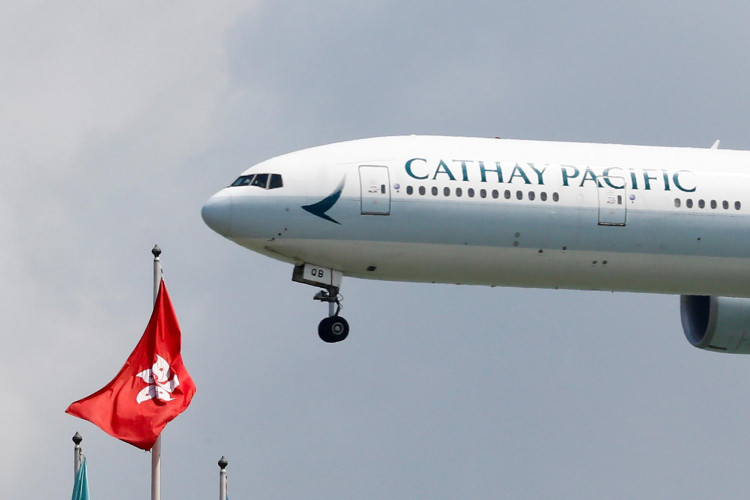Cathay Pacific's grounding of its Airbus A350 fleet earlier this month has brought to light a significant engine defect that could have led to catastrophic damage, according to a report by Hong Kong's Air Accident Investigation Authority (AAIA). The investigation, prompted by an in-flight incident on September 2, uncovered a serious issue with the aircraft's Rolls-Royce engines, specifically a ruptured fuel hose that had the potential to trigger a major fire.
The incident occurred when Cathay Pacific Flight CX383, bound for Zurich, was forced to return to Hong Kong shortly after takeoff due to an engine fire warning. The warning prompted a thorough investigation by the AAIA, which revealed a "discernible hole" in one of the fuel hoses of the second engine, along with black soot, indicating signs of a fire. The investigation also found that five additional secondary fuel hoses on the same engine showed signs of wear and tear, further exacerbating concerns about the safety of the A350 aircraft.
"This serious incident illustrates the potential for fuel leaks through the ruptured secondary fuel manifold hose, which could result in engine fires," the AAIA report stated. The findings pointed to the possibility of fuel leaking from the damaged hose, which, if undetected, could have spread the fire to other critical engine components, leading to "extensive damage" to the aircraft.
The AAIA emphasized the gravity of the situation, noting that if the issue had not been promptly identified, it could have escalated into a full-blown engine fire, jeopardizing the safety of the flight. Burn marks were also discovered under the aircraft's two reverse thrust mechanisms, which are responsible for helping to slow the plane after landing.
In response to the incident, Cathay Pacific immediately grounded its fleet of 48 A350 jets to conduct comprehensive inspections. The airline confirmed that it had replaced components on 15 of the planes following the discovery of the defect. Cathay Pacific acknowledged that this was the first time such a failure had occurred in any A350 aircraft globally. However, the airline stopped short of revealing further specifics about the defective component, leaving key details undisclosed.
Rolls-Royce, the manufacturer of the Trent XWB engines used in Cathay Pacific's A350 aircraft, has also been implicated in the investigation. The AAIA has recommended that the European Union Aviation Safety Agency (EASA) require Rolls-Royce to continue providing updated airworthiness information and inspection guidelines for the fuel manifold hoses on the A350's engines to prevent similar occurrences in the future.
The discovery has raised concerns not only for Cathay Pacific but also for other airlines operating Airbus A350 jets equipped with Rolls-Royce engines. The EASA had already ordered additional inspections of the Airbus A350-1000 engines earlier this month in an effort to prevent similar incidents from happening elsewhere. The safety authority consulted with regulators in Hong Kong, as well as Rolls-Royce and Airbus, to ensure that the problem is addressed on a global scale.
"This incident highlights the importance of ongoing engine inspections and maintenance," the AAIA's report stated. "The findings serve as a critical reminder to all operators of the A350, and indeed all aircraft, of the need for vigilance when it comes to engine safety."
Cathay Pacific has not yet commented on the full scope of the findings or provided additional information regarding the long-term implications for its A350 fleet. However, the airline's swift response in grounding the aircraft and replacing the faulty components indicates that it is taking the situation seriously. As one of the world's leading airlines, Cathay's handling of the issue will be closely watched by both industry peers and regulatory authorities.






